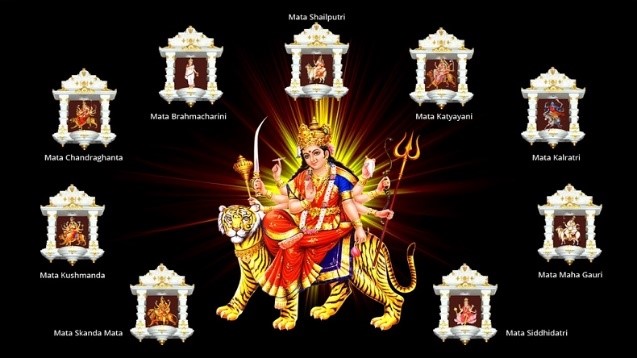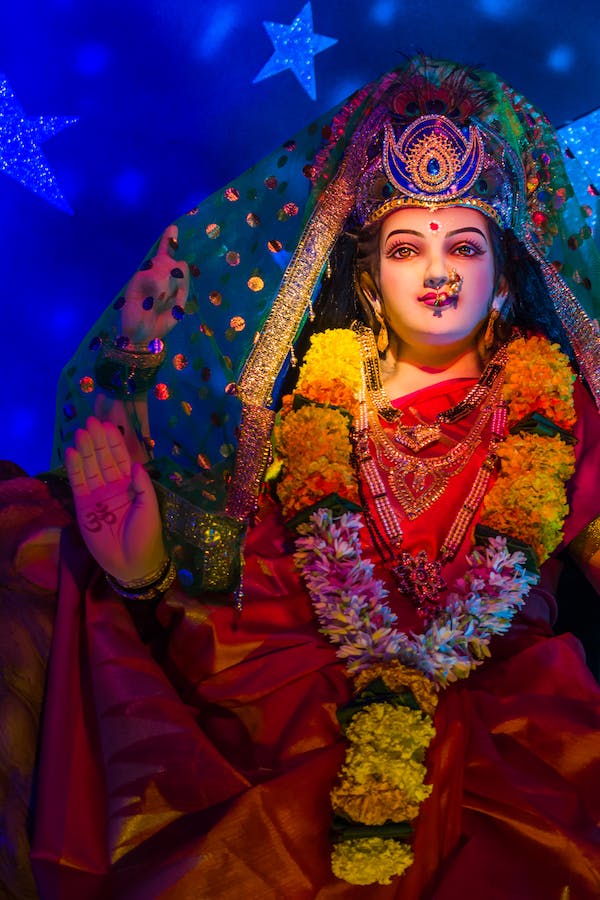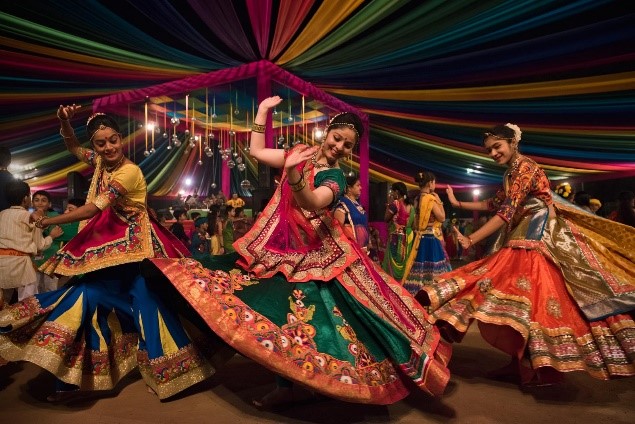Navratri: The Arrival of Shakti in Different Forms

The auspicious festival of Navratri is going to start from 2nd April 2022 with a duration of nine days. Navratri, which falls in March/April is Called Chaitra Navratri which is a joyous period as people welcome the spring season as well. This Navratri is also called Vasant Navratri. In the Hindu religion, there are four Navratri – Chaitra Navratri, Pausha Navratri, Magha Navratri, and Sharad Navratri are celebrated but Sharad Navratri and Chaitra Navratri are the significant ones. The other two Navratri are called Gupt Navratri. Chaitra Navratri symbolizes the beginning of the Hind New Year, devotees worship the manifestation of Shakti in three forms of the Goddess- Durga, Laxmi, and Saraswati.
The word Navratri is the combination of two words- ‘Nava’ and ‘Ratri’, Nava means nine and Ratri means Nights. During these days, the nine forms of Goddess Durga are worshipped- Shailputri, Brahmacharini, Chandraghanta, Kushmanda, Skanda Mata, Katyayani, Kaalratri, Mahagauri, and Siddhidatri

Legends behind the festival
In the Hindu religion, Goddess Durga is a symbol of power, righteousness, and protection from evil. It is said that The Goddess fought with the demon Mahishasur for nine days single-handedly and got victory over him. It was the victory of good over evil. In another story, the Goddess Parvathi visited her parents’ house for nine after the consent of Shiva. In another belief, Chaitra Navratri is the symbol of the beginning, the creation of something new, The Goddess Durga was given the task of creating the world so the festival signifies the beginning of the Hindu New Year.
Importance of Shakti Pooja in Hinduism
Among the four denominations of Hinduism- Shaivism, Shaktism, Vaishnavism, and Smartism, Shakta or Shakti is a prominent one. Shakta followers worship Goddess as supreme power and divine mother. She has different forms; some are gentle and loving and some are fierce. The mother goddess requires absolute surrender from the devotees. Yogis who practice meditation or Dhyana believe that Shakti lies inside the body in a dormant state that can be awakened by meditation to obtain the highest state of spiritual liberation.

How the festival is celebrated across India
The festival of Navratri is celebrated across India in different ways. In Maharashtra, people do ‘Ghatsthapana’ on the first day and for the rest of the days, they pray, keep fasting. On the ninth day, the Ghat is dismantled after performing some rituals. In Gujrat, people keep fasting, light ‘Garbi’, and all nine days perform ‘Garba’ dance. In Goa, people place the idol of the Goddess in a silver swing, and each night she is swung to the tune of temple music. The festival is known as ‘Makharotsava’ in the local language. In Eastern India and Bengal, it is known as Durga pooja, celebrated with decorating pandals where huge idols of the Goddesses are kept. People recite scriptures, sing Bhajans, wear new clothes, and dance. In North India, people place an earthen pot ‘Ghat’ for nine days, keep fasting, visit temples and on the ninth day, offer food to nine young girls. In South India, people worship three forms of Goddess- Maha Kaali, Maha Saraswathi, and Maha Laxmi.